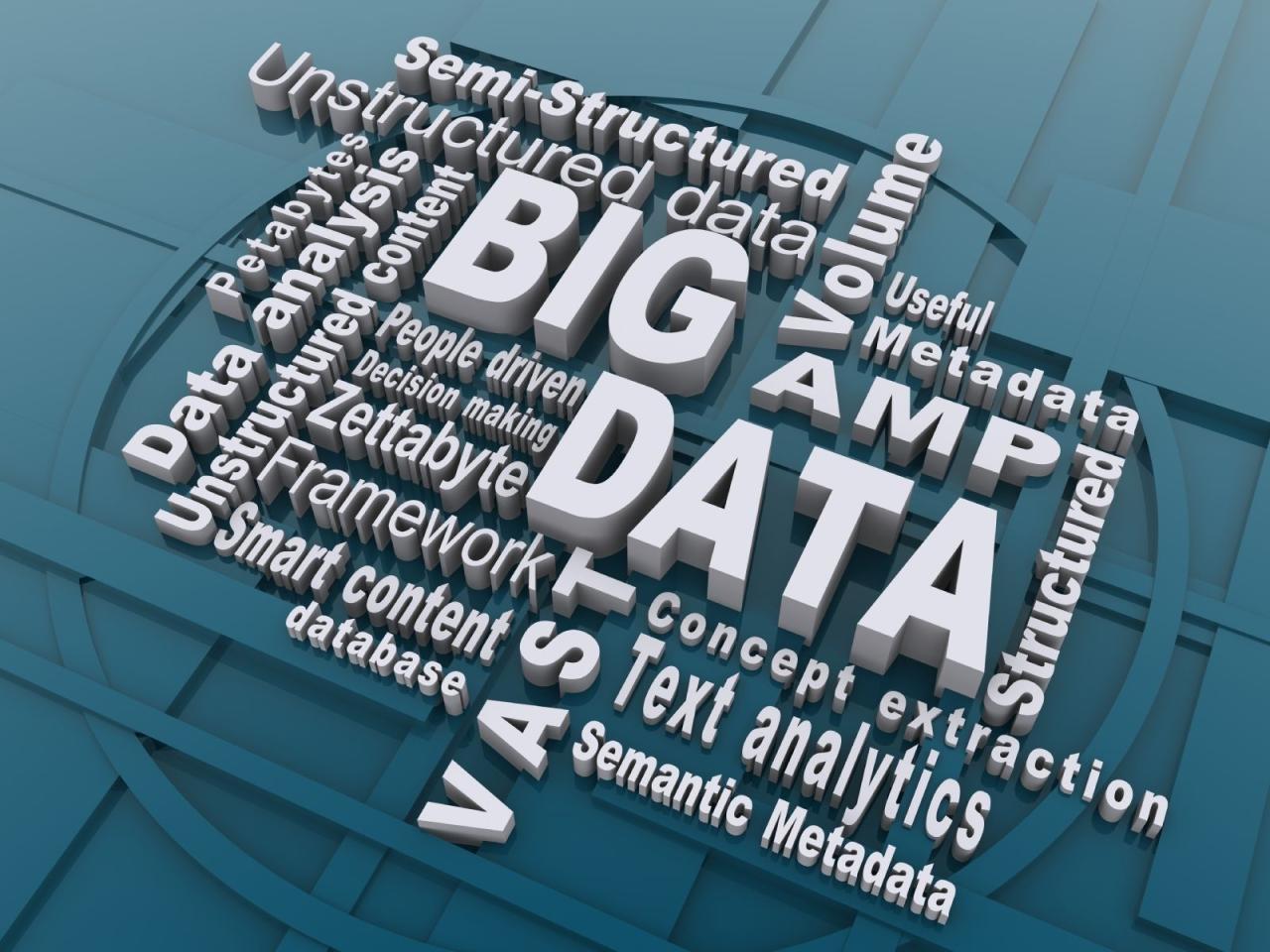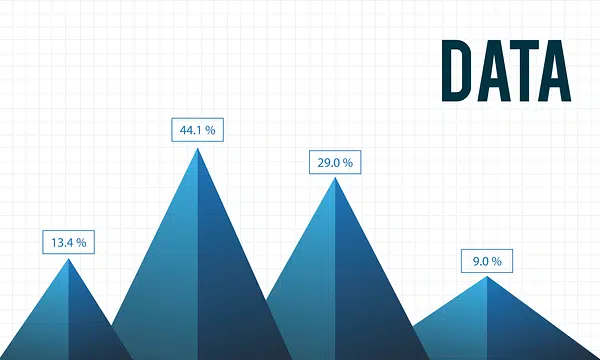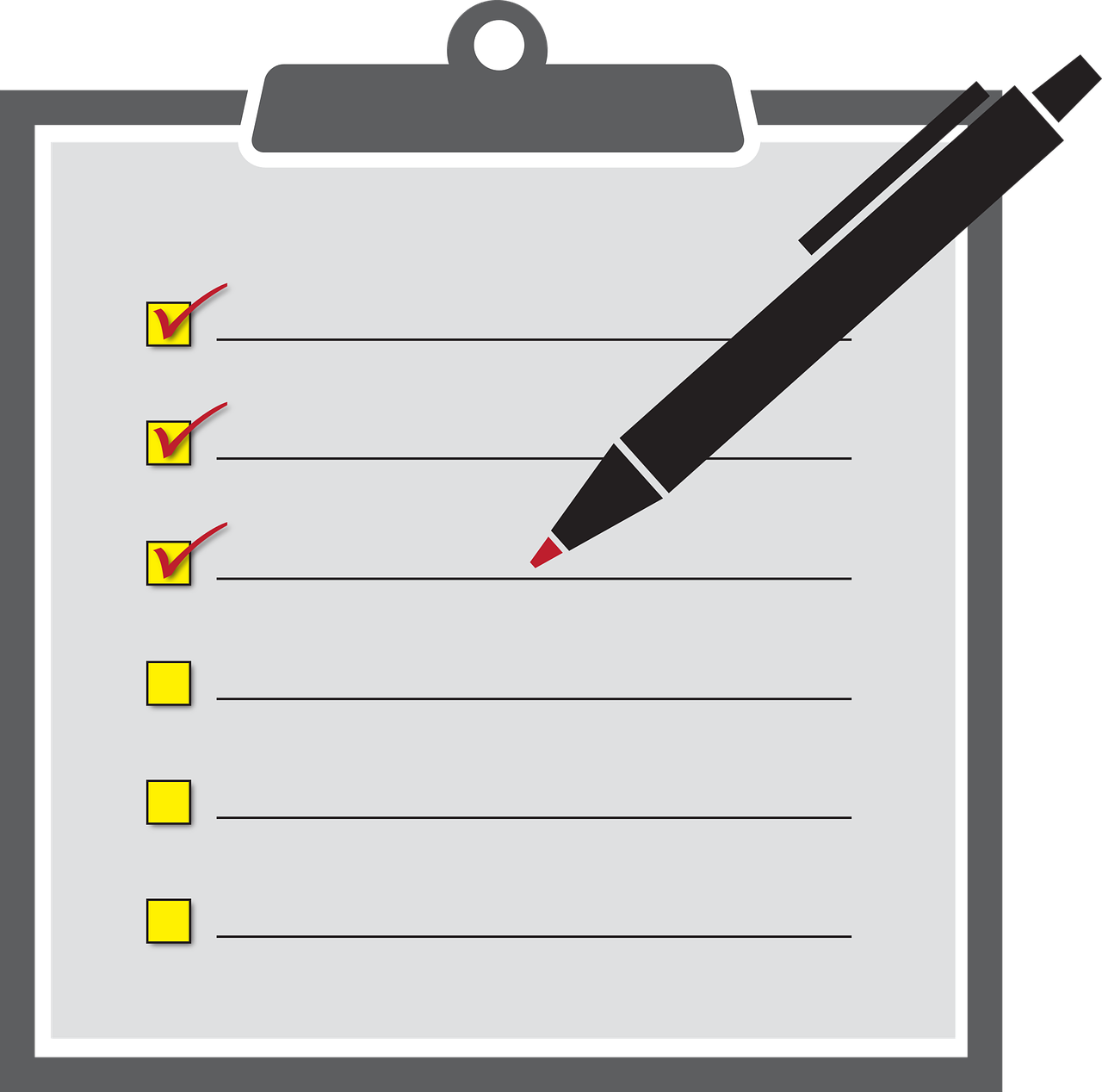In today’s hyper-competitive and data-rich business landscape, the ability to extract meaningful insights from vast oceans of information isn’t just an advantage—it’s the bedrock of sustainable growth and strategic agility. At the heart of this capability lie data analytics platforms, sophisticated ecosystems of tools and technologies designed to collect, process, analyze, and visualize data, transforming raw numbers into actionable intelligence. Far beyond mere reporting, these platforms empower organizations to make intelligent, data-driven decisions that optimize operations, personalize customer experiences, uncover new opportunities, and mitigate risks. They are, in essence, the very engine driving smart decisions, serving as the indispensable backbone for businesses aiming to thrive in the digital age.
The Data Deluge: Why Platforms Are Crucial Today
To truly appreciate the vital role of modern data analytics platforms, we must first understand the unprecedented scale and complexity of data that businesses contend with daily. The era of ‘Big Data’ isn’t just a concept; it’s a living reality demanding robust solutions.
A. The Explosion of Data Volume, Velocity, and Variety
The digital transformation has unleashed an unceasing torrent of data, characterized by what’s often termed the ‘3 Vs’:
- Volume: We’re no longer talking gigabytes or terabytes; data is now measured in petabytes and even exabytes. Every digital interaction—from e-commerce transactions and social media posts to IoT sensor readings and machine logs—generates massive quantities of information. Managing and storing this sheer scale of data is impossible without automated, scalable platforms.
- Velocity: Data is generated and consumed at an astonishing speed. Real-time analytics is no longer a luxury but a necessity for fraud detection, personalized recommendations, and immediate operational adjustments. Platforms must ingest, process, and analyze streaming data with minimal latency.
- Variety: Data comes in myriad forms: structured (databases), semi-structured (JSON, XML), and unstructured (text, images, audio, video). Traditional tools struggled with this diversity. Modern platforms are built to integrate and make sense of this heterogeneous data landscape.
- Veracity: With so much data, ensuring its quality, accuracy, and trustworthiness (veracity) becomes a significant challenge. Dirty data leads to flawed insights and bad decisions. Platforms must incorporate data quality and governance features.
- Value: Ultimately, the goal is to extract value from data. This ‘fifth V’ emphasizes that raw data itself holds little worth; its true potential is unlocked only when it’s analyzed to drive tangible business outcomes.
B. The Quest for Actionable Intelligence
In a competitive market, merely having data isn’t enough. Businesses need to convert data into insights, and insights into actions, quickly and efficiently.
- Strategic Decision Making: Data platforms provide leadership with a holistic view of business performance, market trends, and customer behavior, enabling informed strategic planning and resource allocation.
- Operational Optimization: By analyzing operational data (e.g., supply chain logistics, manufacturing processes, website traffic), businesses can identify bottlenecks, improve efficiency, reduce waste, and streamline workflows in real time.
- Personalized Customer Experiences: Understanding individual customer preferences, behaviors, and purchase histories allows companies to deliver highly personalized marketing campaigns, product recommendations, and customer service, fostering loyalty and driving sales.
- Risk Management and Fraud Detection: Real-time analysis of transaction data and behavioral patterns enables platforms to quickly identify and flag fraudulent activities or emerging risks, protecting assets and reputation.
- New Revenue Opportunities: Data can reveal unmet customer needs, emerging market segments, or opportunities for new products and services that might otherwise go unnoticed, unlocking entirely new revenue streams.
C. The Challenge of Siloed Data
Historically, data was often trapped in disparate systems and departmental silos (e.g., CRM, ERP, marketing automation, finance systems). This fragmentation made it incredibly difficult to get a unified view of the business. Data analytics platforms are designed to break down these silos, integrating data from various sources into a centralized, accessible repository for comprehensive analysis.
Foundational Components of a Modern Data Analytics Platform
A robust data analytics platform is not a single tool but rather an integrated ecosystem of technologies designed to handle the entire data lifecycle, from ingestion to insight.
A. Data Ingestion and Integration
This is the entry point for all data into the platform, ensuring it can connect to various sources and bring data in efficiently.
- ETL/ELT Tools:
- Extract, Transform, Load (ETL): Traditional approach where data is extracted from sources, transformed (cleaned, standardized, aggregated) to fit the target schema, and then loaded into a data warehouse.
- Extract, Load, Transform (ELT): More common in modern cloud environments, where raw data is loaded directly into a data lake or warehouse, and transformations occur within the scalable compute environment of the destination.
- Streaming Data Ingestion: For real-time data, dedicated services are used to ingest continuous streams of events (e.g., website clicks, IoT sensor data, financial transactions). Examples include Apache Kafka, Apache Flink, AWS Kinesis, Azure Event Hubs, Google Cloud Pub/Sub.
- APIs and Connectors: Pre-built connectors and robust APIs allow the platform to integrate seamlessly with various business applications, databases, and third-party services.
B. Data Storage and Management
Once ingested, data needs to be stored efficiently and optimized for analytical queries.
- Data Lakes: Large, centralized repositories designed to store raw, unstructured, semi-structured, and structured data at any scale. They use object storage (e.g., AWS S3, Azure Blob Storage, Google Cloud Storage) and are ideal for storing data before it’s transformed, especially for machine learning and exploratory analytics.
- Data Warehouses: Optimized, structured repositories for processed, cleansed, and transformed data, primarily used for traditional business intelligence (BI) and reporting. They are typically columnar stores designed for analytical queries. Examples: AWS Redshift, Google BigQuery, Azure Synapse Analytics, Snowflake, Databricks SQL.
- Data Marts: Smaller, topic-specific data warehouses tailored for particular business units or analytical needs (e.g., marketing data mart, sales data mart).
- Data Lakehouses: A hybrid approach combining the flexibility and scalability of data lakes with the data management and query optimization features of data warehouses. They allow direct SQL queries on data in the lake while offering ACID properties.
C. Data Processing and Transformation
Raw data often needs significant processing to become useful for analysis.
- Batch Processing Engines: For large volumes of historical data processing. Examples: Apache Hadoop, Apache Spark (can also do streaming).
- Stream Processing Engines: For real-time analysis of data in motion. Examples: Apache Flink, Apache Storm, Spark Streaming.
- Data Cataloging and Governance Tools: Tools to discover, understand, and manage metadata about data assets. Essential for data quality, compliance, and democratizing data access. They help users find and understand relevant data.
D. Data Analysis and Modeling
This is where insights are extracted from the processed data.
- Business Intelligence (BI) Tools: Software that enables users to analyze and visualize data, create dashboards, and generate reports. Examples: Tableau, Power BI, Looker, Qlik Sense. They primarily support descriptive and diagnostic analytics.
- Statistical Analysis Software: Tools for in-depth statistical modeling and hypothesis testing. Examples: R, Python with libraries like Pandas, NumPy, SciPy.
- Machine Learning (ML) Platforms: Environments that allow data scientists to build, train, deploy, and manage machine learning models. Examples: AWS SageMaker, Azure Machine Learning, Google AI Platform. They support predictive and prescriptive analytics.
E. Data Visualization and Reporting
Presenting insights in an understandable and actionable format is crucial.
- Dashboards: Interactive visual displays of key performance indicators (KPIs) and metrics, providing a real-time overview of business health.
- Reports: Structured summaries of data, often generated periodically, for detailed analysis and compliance.
- Interactive Visualizations: Charts, graphs, and maps that allow users to explore data dynamically and uncover patterns.
Core Principles for Designing Effective Data Analytics Platforms
Building a successful data analytics platform isn’t just about assembling tools; it requires adherence to core architectural principles that ensure its long-term viability, performance, and utility.
A. Scalability and Elasticity
The platform must be able to handle fluctuating data volumes and analytical workloads without performance degradation.
- Horizontal Scaling: Components should be designed to scale out by adding more nodes rather than vertically scaling individual machines.
- Cloud-Native Services: Leverage managed cloud services (e.g., serverless compute, auto-scaling databases, object storage) that offer built-in elasticity and scale automatically.
- Decoupled Architecture: Ensure data ingestion, storage, processing, and analysis components are loosely coupled, allowing them to scale independently.
B. Data Governance and Security
Protecting data, ensuring its quality, and complying with regulations are non-negotiable.
- Access Control: Implement granular Identity and Access Management (IAM) to control who can access what data and what actions they can perform.
- Encryption: Encrypt data at rest (storage) and in transit (network) to protect against unauthorized access.
- Data Masking/Anonymization: For sensitive data, implement techniques to mask or anonymize information before it’s used for analytics or shared.
- Data Lineage: Track the origin, transformations, and destinations of data to ensure traceability and auditability.
- Data Quality: Implement processes and tools for data validation, cleansing, and standardization to ensure accuracy and reliability of insights.
- Compliance: Design the platform to adhere to relevant industry regulations (e.g., GDPR, HIPAA, CCPA) and internal data privacy policies.
C. Performance and Optimization
The platform must deliver insights quickly, even with large datasets.
- Optimized Storage Formats: Use columnar storage formats (e.g., Parquet, ORC) in data lakes and warehouses for efficient analytical queries.
- Indexing and Partitioning: Strategically index and partition data in databases and data warehouses to accelerate query performance.
- Caching: Implement caching layers for frequently accessed data or pre-computed results to reduce latency.
- Compute Optimization: Choose appropriate compute resources and processing engines (e.g., highly parallel processing, serverless functions) for different analytical workloads.
D. Flexibility and Extensibility (Polyglot Capabilities)
The data landscape is constantly evolving, so the platform must be adaptable.
- Support for Diverse Data Types: Ability to ingest, store, and process structured, semi-structured, and unstructured data.
- API-First Design: Expose data and analytical capabilities via well-documented APIs to allow easy integration with other applications and services.
- Open Source Integration: Leverage open-source technologies (e.g., Spark, Kafka) that offer flexibility and a large community ecosystem, reducing vendor lock-in.
- Modularity: Design the platform with modular components that can be independently updated or swapped out as new technologies emerge.
E. Usability and Democratization of Data
For data to drive decisions, it must be accessible and understandable to a wide range of users, not just data scientists.
- Self-Service BI: Empower business users with intuitive BI tools to perform their own analyses and create dashboards without relying heavily on IT.
- Data Cataloging: Provide a comprehensive data catalog that allows users to discover, understand, and trust available data assets.
- User-Friendly Interfaces: Ensure visualization and reporting tools are intuitive and customizable.
- Data Literacy Programs: Support organizational data literacy initiatives to help all employees understand and utilize data effectively.
The Data Analytics Journey: Implementing the Platform
Building and leveraging a data analytics platform is an ongoing journey that involves strategic planning, methodical implementation, and continuous iteration.
A. Strategic Planning and Use Case Identification
The journey begins not with technology, but with strategy.
- Business Goals Alignment: Clearly define how data analytics will support overarching business objectives (e.g., increase sales by X%, reduce operational costs by Y%, improve customer retention).
- Identify Key Use Cases: Pinpoint specific business problems or opportunities that data can address. Start with high-impact, achievable use cases to demonstrate early value.
- Data Audit and Inventory: Understand what data exists, where it resides, its quality, and its potential value. This includes identifying data silos.
- Stakeholder Buy-in: Secure commitment from executive leadership, IT, and business units.
B. Architectural Design and Technology Stack Selection
Translating strategic goals into a technical blueprint.
- High-Level Architecture: Design the overall flow of data from source to insight, including ingestion layers, storage components (lake, warehouse), processing engines, and consumption tools.
- Technology Stack Selection: Choose specific cloud services or open-source technologies based on requirements for scalability, performance, security, cost, and existing organizational expertise. Consider factors like managed services versus self-managed solutions.
- Data Modeling: Design appropriate data models for your data warehouse or analytical databases, optimizing for query performance and ease of understanding.
- Security and Governance Framework: Define policies and implement controls for data access, encryption, auditing, and compliance from day one.
C. Data Ingestion Pipeline Development
Building the arteries of the data platform.
- Source System Integration: Develop robust connectors and APIs to pull data from various operational systems (CRM, ERP, marketing platforms, transactional databases).
- Batch and Real-time Pipelines: Implement pipelines for both batch processing of historical data and real-time streaming data, depending on the use case requirements.
- Data Quality Checks: Incorporate automated data validation and cleansing routines within the ingestion pipelines to ensure data integrity.
- Error Handling and Monitoring: Design resilient pipelines with robust error handling, alerting, and logging to ensure data flow reliability.
D. Data Storage and Processing Implementation
Setting up the brain and memory of the platform.
- Data Lake Setup: Establish the data lake using scalable object storage, defining folder structures and access patterns.
- Data Warehouse/Lakehouse Deployment: Provision and configure the chosen data warehouse or lakehouse solution, optimizing for columnar storage and query performance.
- Data Transformation Logic: Develop transformation scripts (SQL, Spark jobs, Python scripts) to cleanse, aggregate, and enrich raw data into a format suitable for analysis.
- Metadata Management: Implement a data catalog to automatically discover and manage metadata, enabling data discoverability and understanding across the organization.
E. Analytics and Visualization Layer Development
Turning data into accessible insights.
- BI Dashboard and Report Creation: Develop interactive dashboards and reports using BI tools that visualize key metrics and trends for business users.
- Advanced Analytics and ML Model Development: For predictive or prescriptive use cases, build and train machine learning models using data from the platform.
- API Exposure: Expose analytical results or aggregated data via APIs for integration with other applications or services.
- User Training and Enablement: Crucially, train business users on how to use the BI tools and interpret the data, fostering data literacy and self-service analytics.
F. Continuous Optimization and Governance
A data platform is never ‘done’; it requires ongoing care.
- Performance Monitoring: Continuously monitor platform performance, query execution times, and resource utilization.
- Cost Optimization: Regularly review cloud spending, right-size resources, and leverage cost-saving mechanisms (e.g., reserved instances).
- Data Governance Evolution: Continuously refine data quality rules, access policies, and compliance measures as data sources and regulations evolve.
- Feedback Loop: Establish a continuous feedback loop with business users to understand their evolving analytical needs and iterate on the platform’s capabilities.
- Security Audits: Conduct regular security audits and penetration testing to identify and remediate vulnerabilities.
Emerging Trends Shaping Data Analytics Platforms
The landscape of data analytics is dynamic, with exciting new trends continually reshaping how organizations approach data. These trends are influencing the design and capabilities of future platforms.
A. Data Mesh Architecture
Moving away from centralized data lakes/warehouses, Data Mesh proposes a decentralized architectural paradigm where data is treated as a product, owned and served by independent, cross-functional domain teams. This approach emphasizes:
- Domain Ownership: Business domains (e.g., marketing, sales, product) own their analytical data pipelines and data products.
- Data as a Product: Data is designed, managed, and served with the same rigor as a software product, with clear APIs and service level objectives.
- Self-Serve Data Infrastructure: A platform team provides self-serve capabilities for data ingestion, storage, and processing, enabling domain teams to operate autonomously.
- Federated Computational Governance: Decentralized governance model where global policies are enforced consistently while allowing for local flexibility.
This trend is particularly relevant for large, complex organizations seeking to scale their data efforts and overcome bottlenecks in centralized data teams.
B. Data Lakehouses: The Best of Both Worlds
The Data Lakehouse architecture is gaining significant traction, aiming to combine the benefits of data lakes (flexibility, cost-effectiveness for raw data, support for diverse data types) with the benefits of data warehouses (data structure, ACID transactions, performance for BI workloads). Technologies like Databricks Lakehouse Platform (using Delta Lake), Apache Iceberg, and Apache Hudi are enabling this. It allows for direct SQL querying on data in the lake, simplifying the data stack.
C. Real-time and Streaming Analytics Everywhere
The demand for immediate insights is accelerating. Future data analytics platforms will put an even stronger emphasis on real-time and streaming analytics. This involves:
- Event-Driven Architectures: Building systems around streams of events for immediate processing.
- Low-Latency Processing Engines: Increased use of dedicated stream processing frameworks optimized for minimal delay.
- Operational Analytics: Integrating analytical capabilities directly into operational systems for immediate action based on live data.
D. AI-Driven Analytics and Augmented BI
Artificial Intelligence and Machine Learning are increasingly embedded directly into data analytics platforms.
- Augmented BI: AI assists business users in discovering insights, generating natural language explanations of data, recommending visualizations, and even auto-generating queries.
- Automated Feature Engineering: ML models automatically create new features from raw data to improve predictive model accuracy.
- Prescriptive Analytics: Moving beyond ‘what happened’ (descriptive) and ‘why it happened’ (diagnostic) to ‘what will happen’ (predictive) and ‘what should we do’ (prescriptive), with AI guiding optimal actions.
- Explainable AI (XAI): As AI becomes more prevalent, platforms will integrate XAI tools to help users understand why an AI model made a particular prediction or recommendation, fostering trust.
E. Data Observability and DataOps
As data pipelines become more complex, ensuring data quality, reliability, and security is paramount.
- Data Observability: Applying principles from software observability (monitoring, logging, tracing) to data pipelines. This involves continuously monitoring data health, schema changes, freshness, and quality, alerting on anomalies.
- DataOps: A methodology that aims to automate, standardize, and improve the quality and delivery of data pipelines, applying DevOps principles to data. It focuses on collaboration, continuous delivery, and process automation in data analytics.
F. Ethical AI and Responsible Data Use
As data becomes more powerful, the focus on ethical considerations is intensifying. Future platforms will incorporate:
- Bias Detection: Tools to identify and mitigate bias in datasets and AI models.
- Privacy-Enhancing Technologies (PETs): Techniques like differential privacy and homomorphic encryption to allow analysis of data while preserving individual privacy.
- Robust Governance: Stricter controls over data usage, consent management, and compliance with evolving privacy regulations.
Conclusion
In the relentless march of the digital age, data is unequivocally the new currency, and data analytics platforms are the indispensable vaults and powerful engines that transform this raw currency into actionable intelligence. They are no longer a luxury but a fundamental strategic imperative for any organization aspiring to make intelligent, data-driven decisions, optimize operations, personalize customer experiences, and unlock unprecedented growth opportunities.
The journey to mastering data analytics is multifaceted, requiring a clear understanding of business objectives, meticulous architectural design, the integration of cutting-edge technologies, and a continuous commitment to data governance and security. From navigating the initial deluge of diverse data to embracing the advanced frontiers of data mesh and AI-driven analytics, these platforms are the future’s blueprint for organizational agility. By wisely investing in and continually evolving their data analytics capabilities, businesses can not only survive but truly thrive, turning every data point into a stepping stone towards smarter decisions and enduring competitive advantage.














